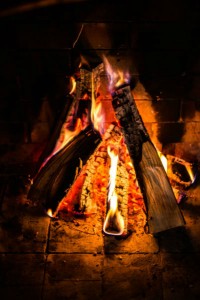For owners of fuel burning appliances, the threat of burn bans can be extremely frustrating. Likewise, complex burn ban regulations can be difficult to understand. At Pristine Sweeps, our goal is to help our customers understand burn bans so they can use their fuel burning appliances as often as possible.
What is a burn ban?
Burn bans can be put in place by the Puget Sound Clean Air Agency. They are mandatory orders that restrict the use of wood burning fireplaces and stoves and outdoor burning. There are two main kinds of burn bans: air quality burn bans and fire safety burn bans.
Air quality burn bans are enacted air quality is degraded and the health of area residents may be negatively impacted. Although they are mandatory, air quality burn bans are merely temporary measures. They usually occur during the fall and winter months and only last for a day or two, but may last as long as a week or more.
Fire safety burn bans, on the other hand, are issued by local fire marshals when dry conditions have increased the risk for wildfire. Most fire safety burn bans last for several months at a time, but typically only effect outdoor burning, such as campfires.
When are burn bans enacted?
Air quality burn bans are typically put into place during stagnant weather conditions when there is an increased risk of air pollution. As most fuel burning fires produce fine particles, or soot, this can be harmful to the heath of small children, the elderly, or people who suffer from respiratory illnesses. By restricting wood smoke emissions, the health of those living in affected areas can be protected.
Stages of burn bans
Based on state burn ban requirements, there are two stages of burn bans. The stage of burn ban that is instated is determined by the air quality in individual counties.
Stage one: A stage one [http://waburnbans.net/terms-explained/] burn ban is based on the possibility of rising pollution levels coupled with current weather conditions. During a stage one burn ban:
- No burning in wood burning fireplaces, uncertified wood stoves, or uncertified inserts is allowed. This does not apply if the wood burning appliance is your only source of heat.
- No wood burning appliances – even those that are certified or are primary heat sources – may produce visible smoke.
- All outdoor burning is banned, including charcoal recreational fires.
Stage two: Stage two burn bans are enacted when the levels of fine particulate emission reach the trigger values set by state law. During a stage two burn ban:
- No burning in wood burning appliances – certified or uncertified – is allowed, unless it is your only heat source.
- No visible smoke may be generated.
- All outdoor burning is banned, including charcoal recreational fires
Should I be concerned about burn bans?
Although the prospect of a burn ban may seem like a deterrent to purchasing a fuel burning appliance, in actuality there are very few burn bans in the Seattle area each year. Typically, there are only three or fewer burn ban days each year, and almost all burn bans are stage one.
If you have questions about burn bans or if your heating appliance meets the certification requirements to operate during burn bans, contact Pristine Sweeps today!

